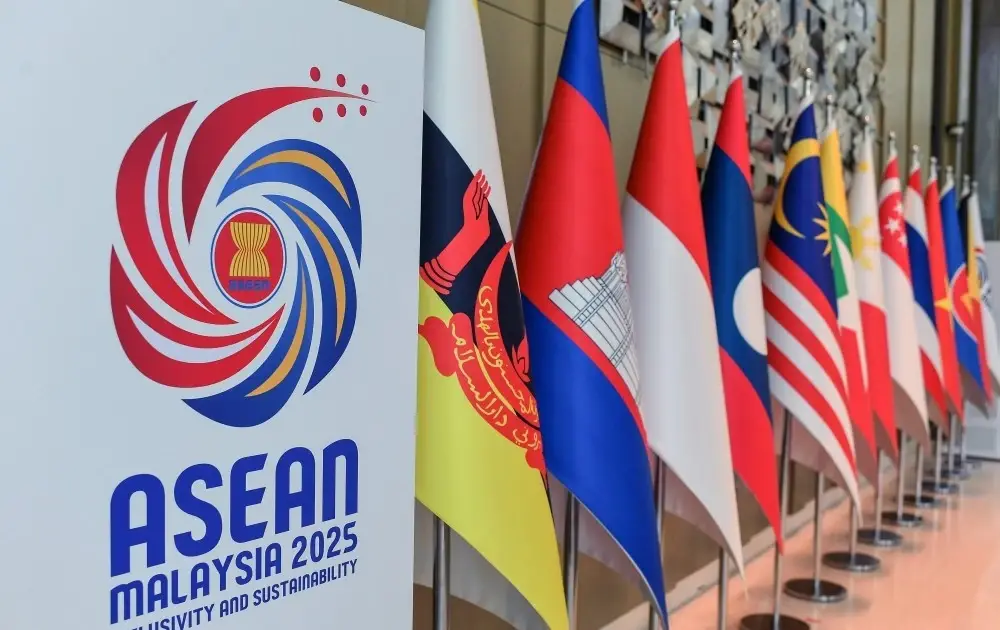46th ASEAN Summit 2025: Malaysia’s Bold Leadership and the Road Ahead for Southeast Asia
Introduction
The 46th ASEAN Summit, taking place from May 26 to 27, 2025, in Kuala Lumpur, is more than just a routine diplomatic gathering. With the world facing growing geopolitical uncertainty, trade tensions, and climate challenges, the summit marks a defining moment for ASEAN’s future. Under Malaysia’s chairmanship, this year’s theme—“ASEAN Matters: Inclusivity and Sustainability”—signals a clear intent: ASEAN is ready to lead, not just react.
This article unpacks the summit’s core themes, strategic agenda, and Malaysia’s role in positioning ASEAN as a cohesive, forward-looking regional force.
Malaysia’s Strategic Vision for ASEAN 2025
As ASEAN Chair in 2025, Malaysia is focused on re-centering ASEAN’s role in global affairs. Prime Minister Anwar Ibrahim has made it clear that ASEAN cannot afford to be passive. The current geopolitical climate—with tensions in the South China Sea, the war in Ukraine, and ongoing U.S.-China rivalry—demands unity and proactive diplomacy.
Malaysia is using the summit to:
- Strengthen ASEAN’s centrality in international decision-making.
- Reinforce economic resilience in response to external shocks, including U.S. tariff policies.
- Promote inclusive policies that bridge development gaps across member states.
Key Themes and Agenda Highlights
1. Inclusive and Sustainable Development
Malaysia is championing inclusive growth across all ten ASEAN nations. This includes pushing for equitable infrastructure investment, digital access, and green economy initiatives. Special focus will be placed on:
- Narrowing the development gap between mainland and maritime ASEAN.
- Supporting micro, small, and medium enterprises (MSMEs).
- Advancing ASEAN’s Sustainable Development Goals (SDGs) alignment.
2. Regional Economic Integration Amid Trade Tensions
With the recent reintroduction of U.S. tariffs on ASEAN exports under Trump’s new trade policies, ASEAN is under pressure to diversify its economic dependencies. The summit will address:
- Strengthening intra-ASEAN trade flows.
- Expanding digital trade and cross-border e-commerce.
- Promoting supply chain resilience through regional cooperation.
3. Security and Geopolitical Stability
Security remains a core topic:
- South China Sea tensions and freedom of navigation.
- Myanmar’s internal crisis and its implications for ASEAN unity.
- Counter-terrorism and cyber defense coordination.
Malaysia is expected to advocate for non-alignment and adherence to international law, reaffirming ASEAN’s role as a neutral yet firm regional voice.
4. Climate Action and Disaster Preparedness
ASEAN is particularly vulnerable to climate risks. The summit includes coordinated strategies for:
- Transboundary haze and disaster response mechanisms.
- Renewable energy partnerships.
- Sustainable agriculture and food security.
Beyond the Summit: Malaysia’s Diplomatic Momentum
The 46th ASEAN Summit is also a prelude to Malaysia’s upcoming role in the ASEAN Summit with Dialogue Partners in October 2025. Malaysia aims to:
- Build stronger partnerships with the Gulf Cooperation Council, BRICS, and the EU.
- Revitalise ties with traditional partners like the U.S., Japan, and China through balanced diplomacy.
- Position ASEAN as a regional anchor in global trade realignment.
Conclusion: Malaysia’s Chairmanship Sets the Tone for a Stronger ASEAN
The 46th ASEAN Summit 2025 isn’t just another annual gathering—it’s a strategic pivot. With Malaysia at the helm, ASEAN is aiming to reclaim its centrality, tighten regional cohesion, and future-proof its economy and diplomacy against global volatility.
From climate change to trade resilience and geopolitical balancing, the summit is setting clear priorities. Malaysia’s leadership is already reshaping how ASEAN responds—not just to today’s problems, but to tomorrow’s uncertainties.

